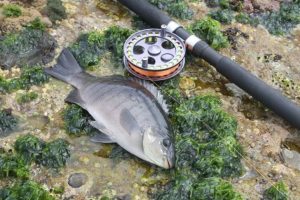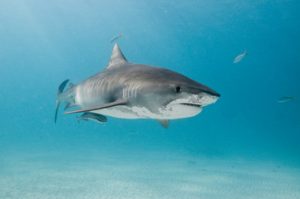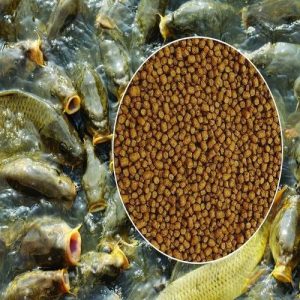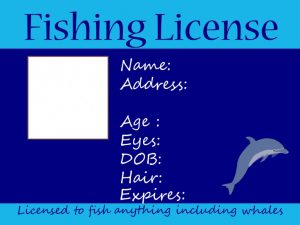RI Fishing Reports
With the arrival of mid-May, Rhode Island’s fishing scene in towns like Narragansett shows promising signs and offers plenty of action for anglers eager to hit the water. Whether you’re targeting striped bass, fluke, squid, tautog, or black sea bass, various species are putting up an exciting fight across locations like Narragansett Bay, Watch Hill, Charlestown, Snug Harbor, and Portsmouth.
A lengthy stretch of beachfront from Watch Hill to Charlestown is known for its fishing hotspots, providing abundant opportunities for different fishing experiences.
If you’re focused on striped bass, you’ll find them moving in strong and good numbers. Capt. Tom Logan of Fish Trap Sportfishing noted increased bass moving into the river and reefs, with many fish in the 20- to 30-pound range caught locally. The same applies at Watch Hill Outfitters, where Mike Wade has reported excellent bass fishing in the river, along beaches, and back inside the salt ponds. If you head towards Charlestown, expect to encounter everything from schoolies to bass exceeding 40 pounds. You might want to leave your “schoolie rods” at home as larger bass and bluefish have moved into the area recently, putting your tackle to the test. Additionally, anglers have observed blue sharks and small makos around Coxes Ledge, adding to the variety of fish seen in these areas.
The unique weather conditions typical of New England can impact fishing plans, so be prepared for fast-changing sea conditions.
Introduction to Rhode Island Fishing
Rhode Island is renowned for its exceptional fishing opportunities, with diverse species to target, including striped bass, sea bass, and tautog. The state’s unique geography, with its mix of coastal shores, bays, and islands, such as Block Island, creates a variety of fishing grounds that cater to different techniques and preferences. Whether you’re interested in cod fishing, bottom fishing, or targeting bigger fish like slot stripers, Rhode Island has something to offer. With numerous charter services, like those found at Snug Harbor Marina and Watch Hill Outfitters, anglers can easily find guided trips to explore the best fishing spots, including the popular East Grounds and Point Judith.
RI Fishing Reports
Regarding bluefish, recent reports have mentioned a handful of bigger blues being caught alongside bass, providing exciting mixed catches during your trip. Bluefish typically show more consistently at this time of year, so you can expect some fun action when you’re out. Fishing conditions have changed over the past week, with notable catches and varying weather patterns affecting the availability of different species.
Trout fishing remains a reliable target for freshwater anglers, especially following recent fall stocking by local authorities.
Fishing activity generally declines during December due to colder temperatures and challenging weather conditions, but some species like cod and tautog are still being caught.
If fluke is your target, the season is picking up. Many reports show fluke starting to appear locally with solid numbers of shorts and a few keepers. Capt. Tony Guarino from Booked Off Charters recently reported a near limit of recreational-sized fluke on their first season trip, signaling that you could have a productive day on the water soon. Snug Harbor’s fishing reports also suggest fluke around 5 pounds, with some larger fish being caught around the island. This offers you a great opportunity to chase these prized flatfish before the season heats up fully. Fishing from various boats enhances the experience, providing different perspectives and opportunities to catch more fish.
The mouth of the Thames River is a strategic location for targeting various fish species due to the abundance of bait.
Squid remains a consistent draw for night and even daytime anglers. Plenty of action is reported from Point Judith, Snug Harbor, and other surrounding areas. Many trips have customers filling 5-gallon buckets with nice-sized squid, making it an ideal bait source for your striped bass and bluefish outings. However, squid fishing may slow down soon as more predatory fish begin to move in. Over the last few weeks, ongoing trends have shown a steady increase in squid catches.
Tides significantly impact fishing conditions, with certain fish feeding actively during specific tidal phases.
Despite challenging weather, there have been surprise catches of tautog, indicating that unexpected successes are still possible.
Specific occurrences, such as reports of large catches, signify the ongoing fishing season and the opportunities it presents.
Fishing reports provide updates on fishing conditions and catches, helping anglers stay informed and plan their trips effectively.
Waves can impact fishing conditions and safety, especially when fishing with children on a boat.
Earlier in the week, there were notable fishing catches and conditions that have influenced current fishing activities.
Interactions between customers and shop owners discussing current fishing conditions highlight the community’s engagement and shared knowledge.
Using a jig has proven effective for targeting tautog, making it a valuable tool in your fishing strategy.
The squid bite has been pretty solid, offering a favorable and enjoyable fishing target during certain conditions.
There has been an impressive presence of bonito along the Rhode Island coastline, particularly during late summer and fall.
Local fishermen face various challenges and experiences during the fishing season, including fluctuating fish availability and environmental conditions.
Fishing experiences over the past season have shown both successes and transitions in species behavior, particularly for tautog and striped bass.
Listening to the crew’s advice is crucial for targeting fish based on current weather and seasonal conditions.
Notable fishing activity and conditions from last week indicate that there were significant catches and changes in fish behavior.
Insights from local captains provide valuable information on fishing conditions and target species, enhancing the overall fishing experience.
Successful catches early in the season have set a positive tone for the fishing period.
Fish are transitioning to deeper waters, highlighting the importance of locating spots at varying depths for successful catches.
Wind conditions can significantly impact fishing trips, affecting boat anchoring and overall success.
Casting fishing lines effectively can contribute to catching more fish, especially when targeting species like fluke and bonito.
A fisherman recently hung up the phone and realized he forgot to mention a significant fishing event, reflecting the excitement and eagerness to share noteworthy experiences.
Fishing Techniques and Gear
Fishing in Rhode Island requires various techniques and gear, depending on the target species and fishing location. For striped bass, anglers often use a combination of bait and lures, such as peanut bunker and jigs, to entice these fish in the bay and along the shore. When targeting tautog, green crabs and spider crabs are effective baits in shallow water, while white crabs work well in deeper water. For cod and sea bass, bottom fishing with bait like clams or squid can be productive. Anglers should also be prepared for changing weather conditions, with a good reel and sturdy rod to handle the rough seas and strong winds. Watch Hill Outfitters and other local tackle shops can provide valuable advice on the best gear and techniques for the current fishing conditions.
Fishing grounds
Tautog fishing
Tautog and scup fishing reports are holding steady as well. Anglers have seen tautog caught successfully in shallow waters, with some limit catches reported from 20 to 30 feet near Watch Hill and Charlestown. Scup and black sea bass have started appearing in good numbers and will become more of a target as the spring season progresses. If you enjoy targeting black sea bass, you’ll be pleased that the season for keeping them opens on May 22nd.
For an all-around fantastic fishing experience, consider exploring the salt ponds, breachways, reefs, and bay areas. The diversity of species and abundance of fish provide plenty of chances for enjoyable trips, whether you prefer inshore or offshore fishing. Plus, local outfitters and charters still have some prime dates open if you want expert guidance on the water.
Sea bass and black sea bass
Conservation and Sustainability
With each trip, you can expect good catches and the opportunity to enjoy Rhode Island’s scenic coastline and rich marine environment. Don’t hesitate to check with your local bait and tackle shops or charter operators to get the most up-to-date information and plan an unforgettable fishing adventure.
Conservation and sustainability are crucial aspects of Rhode Island’s fishing industry, with efforts in place to protect and rebuild fish populations. The Rhode Island Department of Environmental Management (RIDEM) plays a key role in enforcing fishing regulations, including catch limits and size restrictions, to prevent overfishing and ensure the long-term health of fish stocks. Anglers can contribute to these efforts by practicing catch-and-release fishing, handling fish gently, and reporting their catch to help monitor fish populations. Additionally, supporting local conservation initiatives and respecting marine habitats can help maintain the state’s great fishing reputation and ensure that future generations can enjoy the same amazing fishing experiences.
Planning Your Trip
Planning a fishing trip to Rhode Island requires some preparation to ensure a successful and enjoyable experience. Start by researching the best times of year for your target species, as well as the most productive fishing grounds. Booking a charter with experienced captains from Snug Harbor Marina or Watch Hill Outfitters can provide valuable local knowledge and increase your chances of a great catch. Make sure to pack appropriate gear, including sturdy rods, reels, and a variety of baits and lures. Check the weather forecast and be prepared for changing conditions, especially if you plan to fish offshore. Lastly, familiarize yourself with local fishing regulations to ensure a responsible and legal fishing trip.
Fishing Regulations
Rhode Island has specific fishing regulations designed to protect fish populations and ensure sustainable fishing practices. These regulations include catch limits, size restrictions, and seasonal closures for various species. For example, the black sea bass season opens on May 22nd, and there are specific size and bag limits for species like striped bass and fluke. Anglers should always check the latest Rhode Island Department of Environmental Management (RIDEM) regulations before heading out, as rules can change based on fish population assessments. Adhering to these regulations helps preserve the state’s rich fishing heritage and ensures that future generations can enjoy the same bountiful waters.

What is the best blackfish rod
Best blackfish rod Blackfish rods are among the most iconic fishing rods in the world. Here’s everything you need to know about them. Blackfish rods

Can You Eat Tiger Shark?
Can you eat tiger shark? While some sharks are edible, some are not the best to eat. Some sharks are not even safe for human

Do you ever wonder can fish digest corn?
does corn kill fish The best way to tackle this headline would be to ask yourself if you believe fish can digest corn. I’d say

How to get a fishing license in Rhode Island
Rhode Island Fishing License Fishing has been proven to be one of the most peaceful recreational activities anyone can engage in. Rhode Island (RI) has

Do you know what size hook for fluke you are using?
My fluke hook size is bigger than yours What size hook is best for a fluke? How about 12 inches? Yes, this is how long

First light vs Sunrise
What is first light? As a fisher or even a hunter, a lot of your fishing or hunting activities revolve around the sun. The sun


